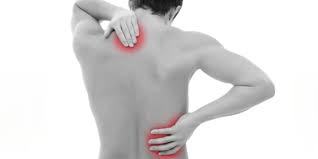Often, people who
experience muscle aches can easily pinpoint the cause. This is because most
instances of myalgia result from too much stress, tension, or physical
activity. Some common causes include:
muscle tension in one or more areas of the body
overusing the muscle during physical activity
injuring the muscle while engaging in physically demanding work or exercise
Not all muscle aches are related to stress, tension, and physical activity.
Some medical explanations for myalgia include:
fibromyalgia
infections, such as the flu, polio, or bacterial infections
autoimmune disorders such as lupus, dermatomyositis, and polymyositis
use of certain medications or drugs, such as statins, ACE inhibitors, or
cocaine
thyroid problems, such as hypothyroidism or hyperthyroidism
hypokalemia (low potassium)



 Contact Us
Contact Us







 Hospitals
Hospitals
 Doctors
Doctors
 Diagnostic
Diagnostic
 Pharmacy
Pharmacy
 Health Tips
Health Tips
 Blog
Blog

























Comments